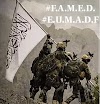by Andrew Rettman | |||
Global Research, August 11, 2011 | |||
A Nato strike to disable the Syrian army is technically feasible according to experts, such as former French air chief Jean Rannou. But it could make the country's internal situation worse.
Nato member countries would begin by using satellite technology to spot Syrian air defences. A few days later, warplanes, in larger numbers than Libya, would take off from the UK base in Cyprus and spend some 48 hours destroying Syrian surface-to-air missiles (SAMs) and jets. Alliance aircraft would then start an open-ended bombardment of Syrian tanks and ground troops.
The scenario is based on analysts in the French military, from the specialist British publication Jane's Defence Weekly and from Israel's Channel 10 TV station.
The Syrian air force is said to pose little threat. It has around 60 Russian-made MiG-29s. But the rest - some 160 MiG-21s, 80 MiG-23s, 60 MiG-23BNs, 50 Su-22s and 20 Su-24MKs - is out of date.
Its latest SAMs could shoot down a handful of Nato pilots. In the past three years, Syria deployed hundreds of Russian-made SA-17s, which come up on radars for a very short time before firing. Israel in 2007 bombed a suspected nuclear site in Syria using a cyber attack cut electricity to air defences. The SA-17s are believed to be cyber-insulated and Israel might not share its secrets with Nato, however.
Syria in 2006 bought around 30 Russian-made Pantsyr-S1 anti-aircaft cannon...It has stocked up on modern SA-18 missiles from Belarus and Russia. But these are short-range weapons that would only pose a danger to Nato helicopters in a later stage of the operation.
There are also assymetric threats - Nato countries have vulnerable troops in Unifil, the UN mission in neighbouring Lebanon...
...
"I don't see any purely military problems. Syria has no defence against Western systems ... [But] it would be more risky than Libya. It would be a heavy military operation," Jean Rannou, the former chief of the French air force, told EUobserver. He added that action is highly unlikely because Russia would veto a UN mandate, Nato assets are stretched in Afghanistan and Libya and Nato countries are in financial crisis.
...
Robert Baer, a former CIA officer in Syria, said there is small hope a Nato strike would bring peace: "Any force used on Syria would be a total shot in the dark, a hope the military under attack will turn on the regime. But when has this ever happened? It didn't with [late Iraqi leader] Saddam or [Libyan leader] Gaddafi."
Baer previously told this website the turmoil in Syria is more complicated than the image in mainstream media of a downtrodden Sunni Muslim majority calling for reform by the Shia Muslim ruling elite.
Alastair Crooke, a former MI6 officer and high-level EU advisor who runs an NGO in Beirut, backed up Baer's views.
"Syrians want change. But whether Westerners believe it or not, most people in Damascus, in Aleppo, the middle classes, the merchant classes and the [sectarian] minorities believe Assad is the only person who can bring in reforms," he said. "They fear two things above all else - civil war and Western intervention ... They would like to avoid the example of Libya because it would lead them into civil war."
Crooke said two important forces behind events are Sunni radicals and Syrian exile groups in France and the US.
He said the radicals follow the teaching of Abu Musab Zarqawi, a late Jordanian Islamist, who aimed to create a Sunni emirate in Jordan, Lebanon, Palestine and Syria called Bilad a-Sham. They are experienced urban guerillas who fought in Iraq and have outside finance. They infilitrate protests to attack Assad forces, as in Jisr al-Shagour in June, where they inflicted heavy casualties.
Crooke said the exile groups aim to topple the anti-Israeli regime. They are funded and trained by the US. They pay Sunni tribal chiefs to put people on the streets, work with NGOs to feed uncorroborated stories of atrocities to Western media and co-operate with radicals in the hope that escalating violence will justify Nato intervention.
"There is a huge difference with [the revolution in] Egypt," he added. "But the picture you see in the European and American press is that you are dealing with peaceful protests and that Assad has nothing better than to do than to kill his own people."





0 Comments